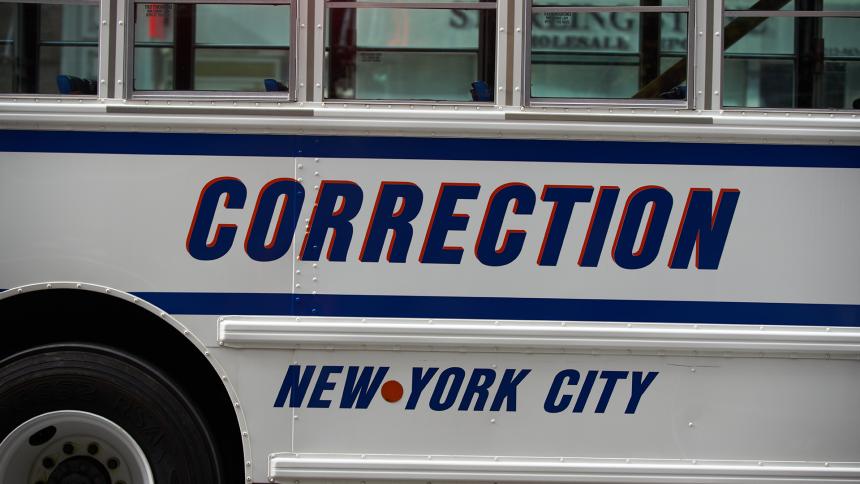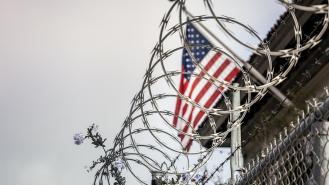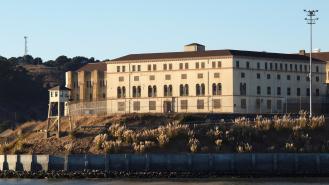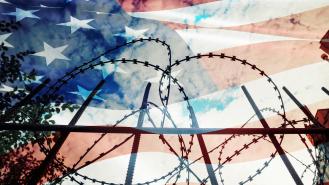
Rikers Island: New York’s most notorious jail
In US parlance, Rikers Island is technically a jail rather than a prison, since it only houses inmates on remand, serving short sentences, or awaiting transfer to another facility. But this doesn’t make it any less of a punishing ordeal for those unlucky enough to be caged here, just a stone’s throw from the glittering skyscrapers of Manhattan.
The world’s largest penal colony
The Rikers Island complex sprawls across a 415-acre chunk of land situated in New York City’s East River. The island was originally procured by Dutch immigrant Abraham Rycken in 1664, and two centuries passed before the city bought it from his descendants for $180,000.
The original intention was to build a workhouse for the poor, but a jail was opened instead, with the facility first taking inmates in 1932. Today there are 10 separate jails on the island, capable of housing up to 17,000 inmates.
Over almost a century, every type of human being has been incarcerated here, from wealthy celebrities to those mired in poverty, and from trigger-happy gangsters to white-collar criminals. The sheer size of the place, together with its infamously brutal conditions, has led many to dub it the world’s largest penal colony.
Convicts to the rescue
One of the most dramatic incidents in the history of the complex unfolded on 1st February 1957, when Northeast Airlines Flight 823 crashed on Rikers Island just moments after taking off from New York City’s LaGuardia Airport during a snowstorm.
20 passengers were killed in the inferno. Survivors scrambled to escape the burning fuselage, with one man dragging his wife onto the wing of the plane by her hair, and another throwing his six-week-old baby son onto a mound of snow to save the infant from the fire.
The deputy warden of Rikers made the split-second decision to allow some convicts out of their cells to help the desperate rescue effort, despite the real risk they would try to escape. The gamble paid off, with the prisoners taking dozens of badly burnt survivors to the island’s medical centre.
Their compassion and bravery would lead to many of the rescuers being rewarded with early release or reduced sentences.
The great Rikers heist
When the great Surrealist artist Salvador Dali donated a portrait of Christ’s crucifixion to Rikers Island in 1965, there were concerns that displaying such a valuable work in full view of hardened criminals would put it at risk of theft or damage. As it turned out, it was at risk from the guards, not the inmates.
The work, which Dali painted for the jail as an apology for missing an art lesson he had been scheduled to give, was originally displayed in an inmates’ dining area. It was later moved to the lobby of an administrative building, supposedly out of harm’s way. During a fire drill in March 2003, a guard quickly swapped the Dali with a replica (which had been painted by another guard with a talent for art) while his co-conspirators kept a lookout.
The fake was quickly spotted, and just days later one of the robbers turned himself in. He agreed to wear a wire and speak to his unsuspecting colleagues in crime, leading to three men being convicted. One guard was acquitted, much to his own surprise (he literally ran out of the courtroom as soon as the verdict was read out because he was ‘afraid the jury was going to change their mind’).
As for the original Dali painting – its whereabouts are still a total mystery.
Famous inmates
Given that it’s New York City’s biggest holding pen for suspected and convicted miscreants, it’s unsurprising that quite a few high-profile people have found themselves locked up on Rikers Island.
In 1995, hip hop star Tupac Shakur was imprisoned at Rikers while awaiting sentencing for a groping conviction. He was actually held in the hospital block because he was recovering from being shot a few months before.
Many years before that, Mark David Chapman underwent psychiatric analysis at Rikers while awaiting trial for the murder of John Lennon. Another notorious inmate was Sex Pistols punk Sid Vicious, who was sent to Rikers after assaulting the brother of fellow rock icon Patti Smith in a nightclub. He died of a drug overdose just a day after leaving Rikers in 1979.
Perhaps the most high-profile inmate in recent years was disgraced movie mogul Harvey Weinstein, who was held at the complex while awaiting sentencing for sex offences.
The final lock-up
Never free from controversy, Rikers Island has been hit by a succession of particularly dark scandals in the modern era. These include numerous inmate deaths and evidence of systemic dysfunction.
In 2010, a guard was handed a prison sentence for running a fight club at Rikers which encouraged teenage inmates to attack each other. In 2016, President Obama personally weighed in on the morality of solitary confinement, citing the case of Kalief Browder, who was held in solitary for 700 days for allegedly stealing a backpack, only for his case to be dismissed. Kalief later took his own life.
Such outrages have led to calls for Rikers to go the way of Alcatraz, with an independent report stating that ‘closing Rikers Island is a moral imperative’. The complex is scheduled to be locked up for good in 2027, but whether that deadline will be met remains to be seen.








